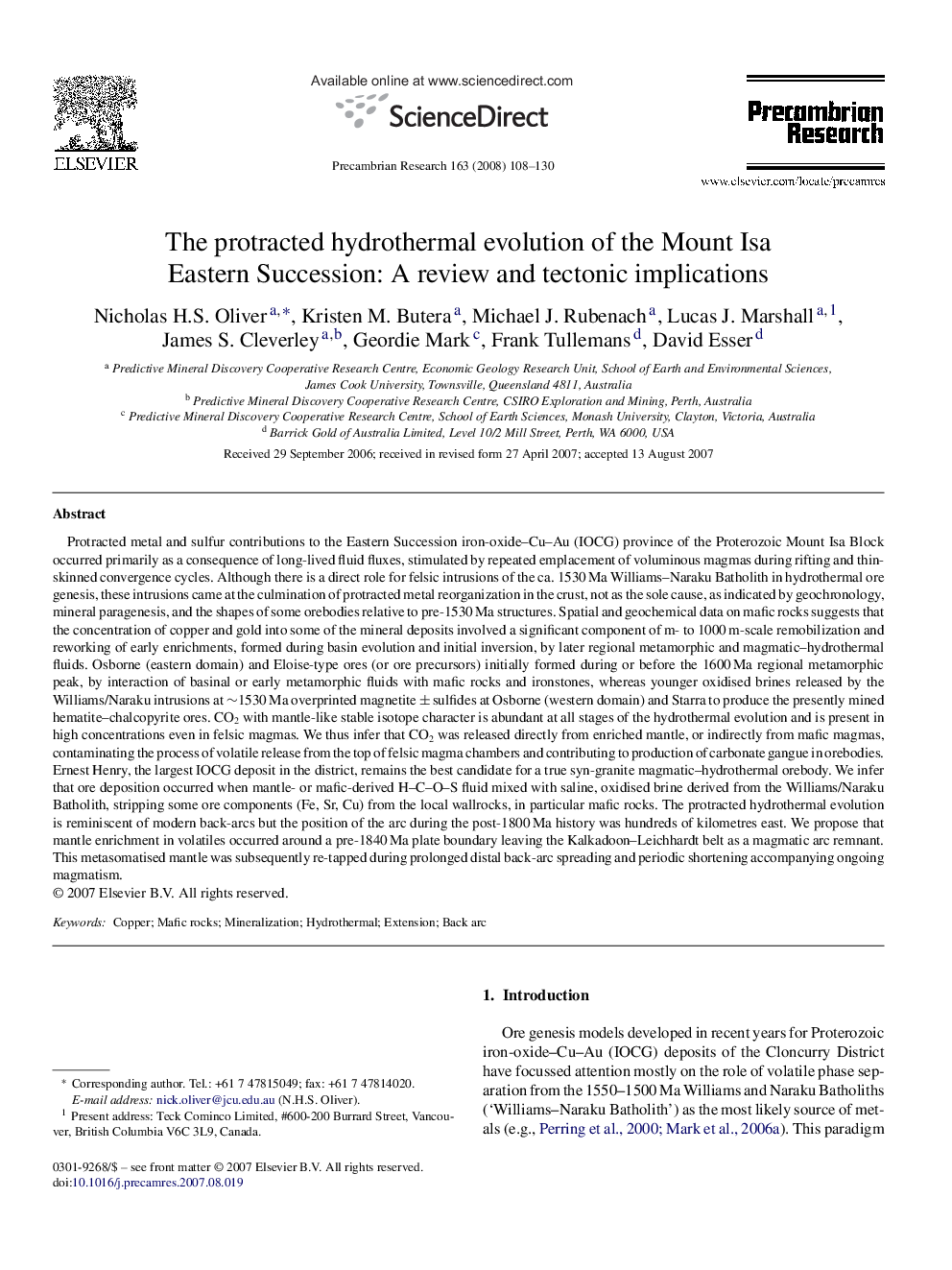| کد مقاله | کد نشریه | سال انتشار | مقاله انگلیسی | نسخه تمام متن |
|---|---|---|---|---|
| 4724380 | 1639704 | 2008 | 23 صفحه PDF | دانلود رایگان |

Protracted metal and sulfur contributions to the Eastern Succession iron-oxide–Cu–Au (IOCG) province of the Proterozoic Mount Isa Block occurred primarily as a consequence of long-lived fluid fluxes, stimulated by repeated emplacement of voluminous magmas during rifting and thin-skinned convergence cycles. Although there is a direct role for felsic intrusions of the ca. 1530 Ma Williams–Naraku Batholith in hydrothermal ore genesis, these intrusions came at the culmination of protracted metal reorganization in the crust, not as the sole cause, as indicated by geochronology, mineral paragenesis, and the shapes of some orebodies relative to pre-1530 Ma structures. Spatial and geochemical data on mafic rocks suggests that the concentration of copper and gold into some of the mineral deposits involved a significant component of m- to 1000 m-scale remobilization and reworking of early enrichments, formed during basin evolution and initial inversion, by later regional metamorphic and magmatic–hydrothermal fluids. Osborne (eastern domain) and Eloise-type ores (or ore precursors) initially formed during or before the 1600 Ma regional metamorphic peak, by interaction of basinal or early metamorphic fluids with mafic rocks and ironstones, whereas younger oxidised brines released by the Williams/Naraku intrusions at ∼1530 Ma overprinted magnetite ± sulfides at Osborne (western domain) and Starra to produce the presently mined hematite–chalcopyrite ores. CO2 with mantle-like stable isotope character is abundant at all stages of the hydrothermal evolution and is present in high concentrations even in felsic magmas. We thus infer that CO2 was released directly from enriched mantle, or indirectly from mafic magmas, contaminating the process of volatile release from the top of felsic magma chambers and contributing to production of carbonate gangue in orebodies. Ernest Henry, the largest IOCG deposit in the district, remains the best candidate for a true syn-granite magmatic–hydrothermal orebody. We infer that ore deposition occurred when mantle- or mafic-derived H–C–O–S fluid mixed with saline, oxidised brine derived from the Williams/Naraku Batholith, stripping some ore components (Fe, Sr, Cu) from the local wallrocks, in particular mafic rocks. The protracted hydrothermal evolution is reminiscent of modern back-arcs but the position of the arc during the post-1800 Ma history was hundreds of kilometres east. We propose that mantle enrichment in volatiles occurred around a pre-1840 Ma plate boundary leaving the Kalkadoon–Leichhardt belt as a magmatic arc remnant. This metasomatised mantle was subsequently re-tapped during prolonged distal back-arc spreading and periodic shortening accompanying ongoing magmatism.
Journal: Precambrian Research - Volume 163, Issues 1–2, 20 May 2008, Pages 108–130